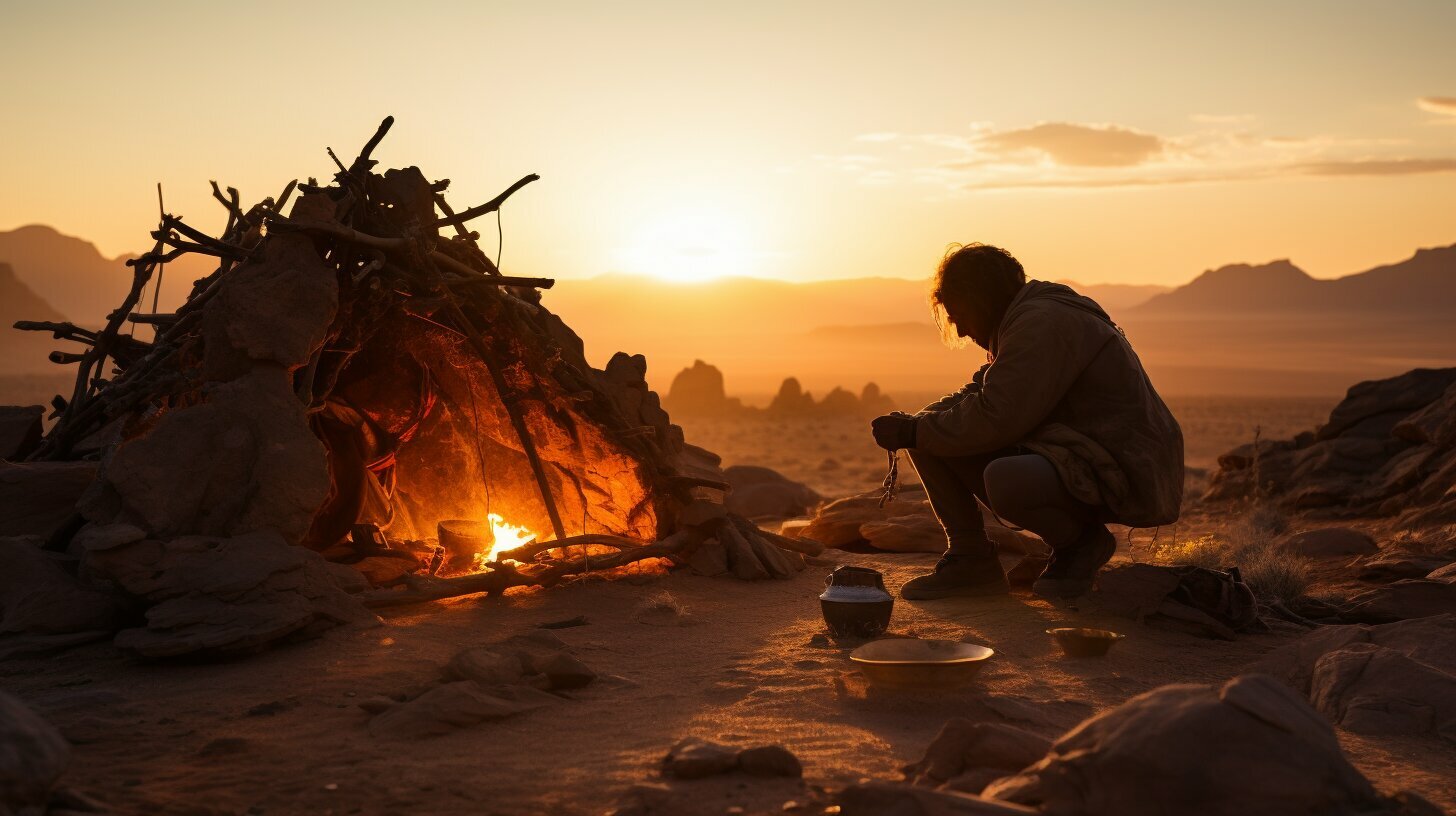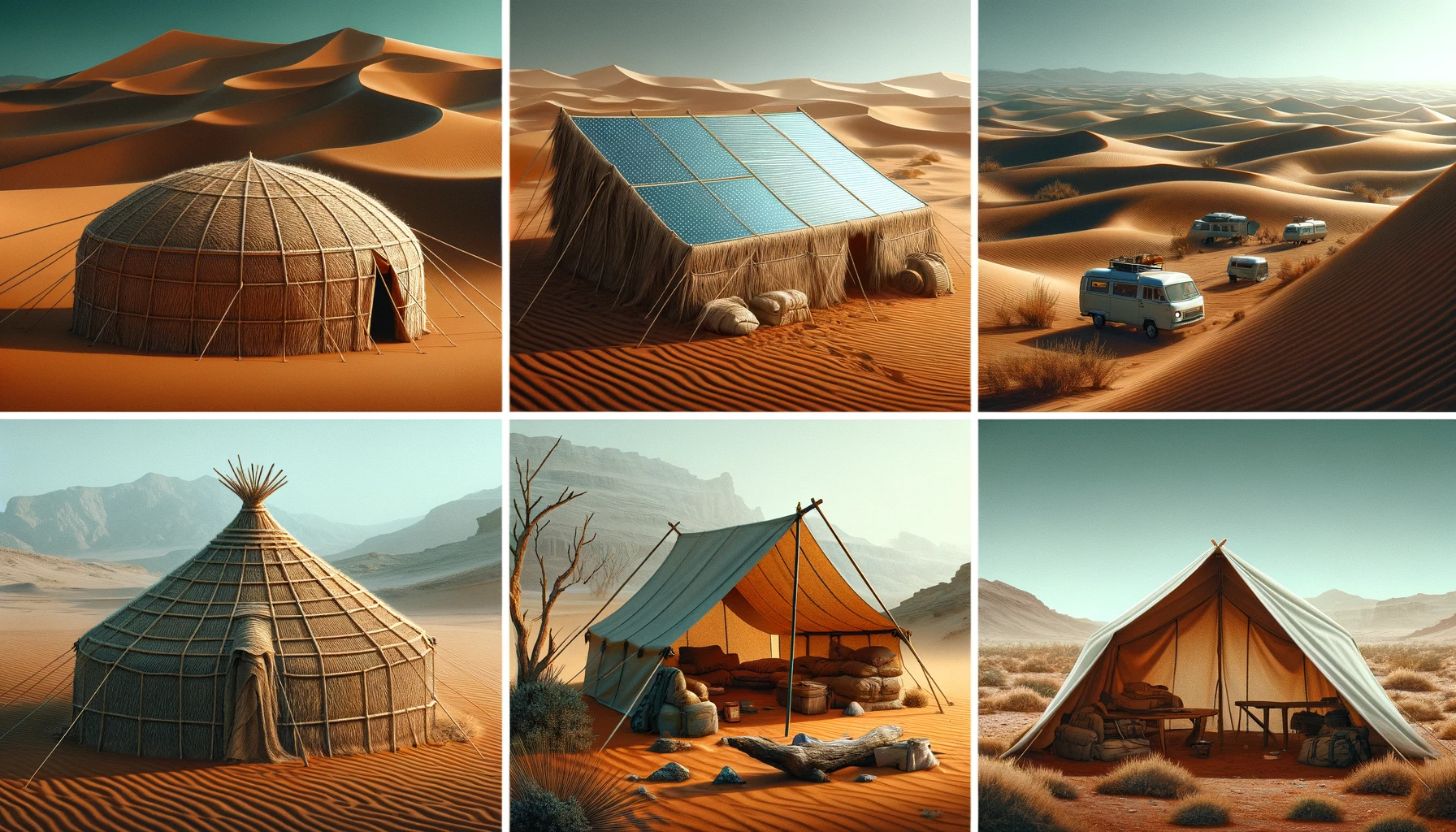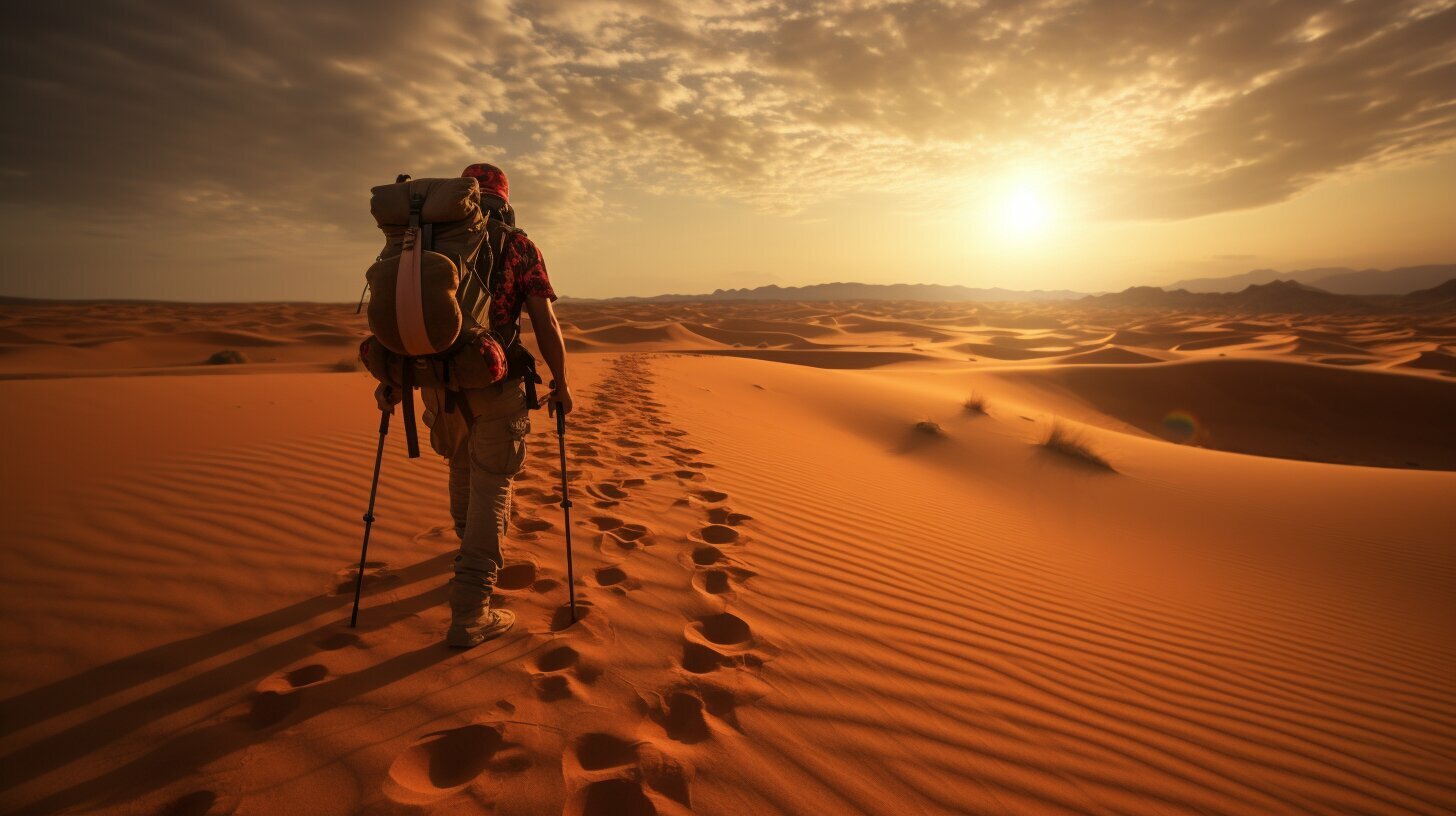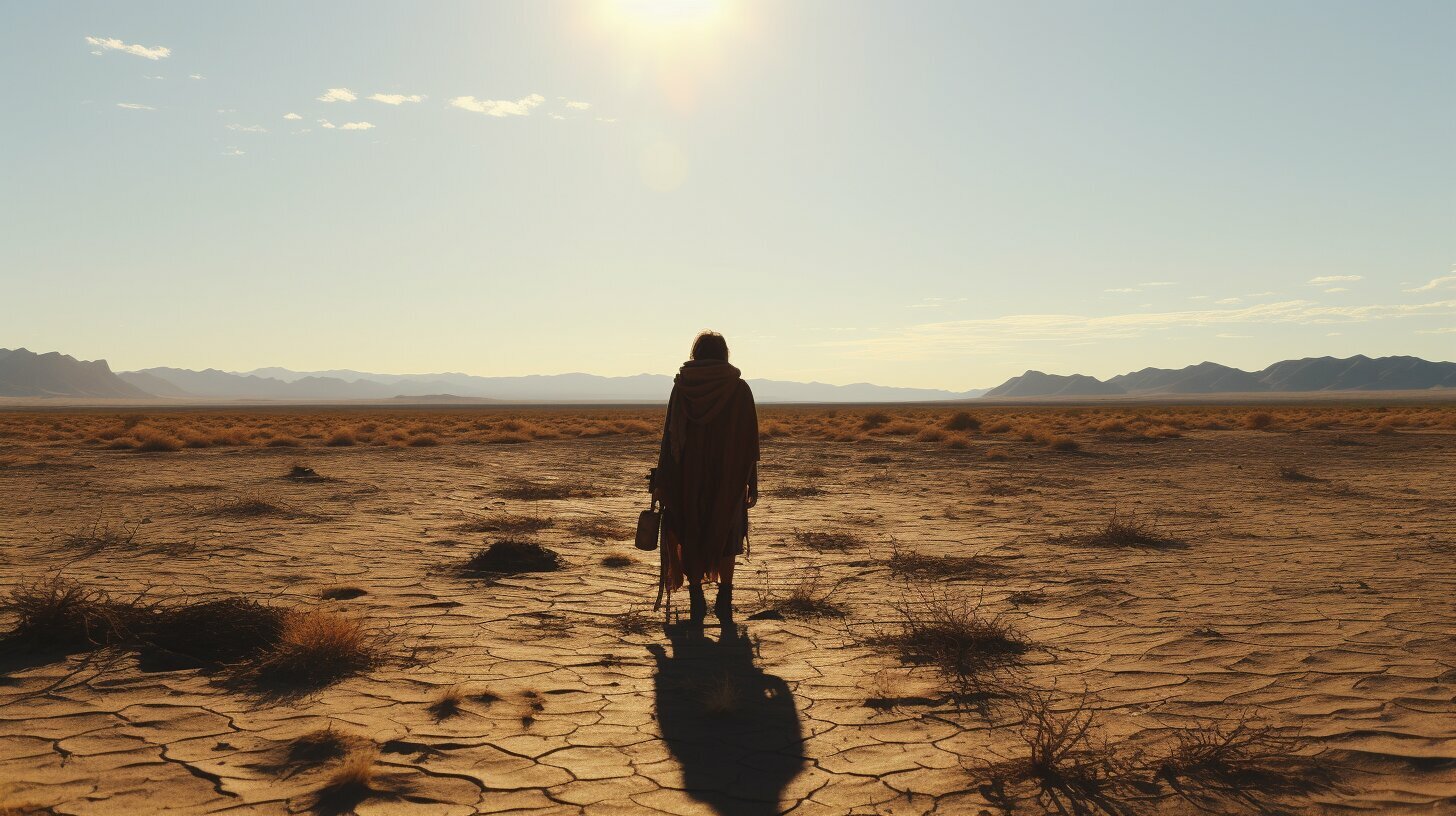Are you planning a trip to the desert? Whether you’re an experienced hiker or novice adventurer, it’s important to have the necessary skills and knowledge to survive in this harsh environment. From extreme temperatures to the lack of water and potential wildlife encounters, the desert presents unique challenges that require preparation and readiness.
By mastering desert survival skills and knowledge, you can feel confident and secure in any situation. Learning these skills not only enhances your safety, but also allows you to fully immerse yourself in the beauty and wonder of the desert.
Key Takeaways
- Surviving in the desert requires specific skills and knowledge
- The desert presents unique challenges such as extreme temperatures and lack of water sources
- Acquiring desert survival skills and knowledge enhances safety and allows for full enjoyment of the desert
Understanding the Desert Environment
Before you can begin to master desert survival skills, it’s important to have a thorough understanding of the environment you’ll be facing. The desert is an unforgiving place, with extreme temperatures, limited water sources, and potential wildlife encounters.
The first and most important factor to consider is water. In the desert, water sources are scarce and often difficult to find. You should always carry a sufficient amount of water with you, as well as a way to purify any additional water you may come across. This can be accomplished using a portable water filter or by boiling water.
Disclosure: When you buy through links on our site, we may earn an affiliate commission.
In addition to water, you should also be aware of the extreme temperatures in the desert. During the day, temperatures can reach well over 100 degrees Fahrenheit, while at night they can drop below freezing. It’s important to dress in lightweight, breathable clothing during the day and layer up at night to avoid hypothermia.
Wildlife encounters are also a concern in the desert, with venomous snakes and scorpions being common hazards. Be sure to wear protective clothing and shoes, and always be aware of your surroundings.
By understanding the challenges of the desert environment, you can better prepare yourself to face them and increase your chances of survival.
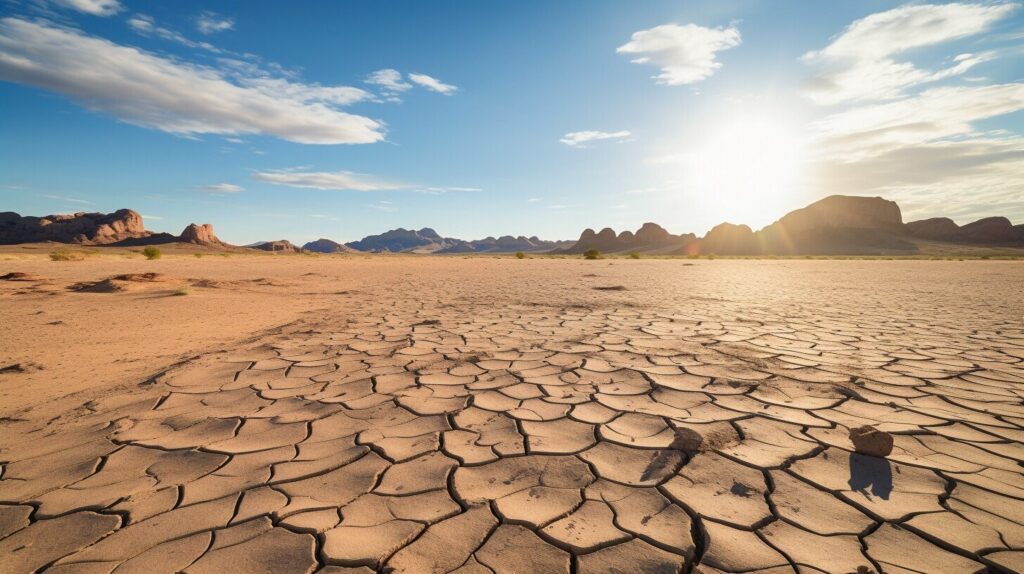
Understanding the Desert Environment
| Factors to consider: | What to do: |
|---|---|
| Water sources are scarce | Carry enough water with you and purify any additional water sources using a filter or boiling. |
| Extreme temperatures | Dress appropriately in lightweight, breathable clothing during the day, and layer up at night. |
| Wildlife encounters | Wear protective clothing and shoes, and always be aware of your surroundings. |
Essential Desert Survival Skills
Surviving in the harsh environment of the desert requires a certain set of skills that are crucial for your safety and well-being. Here are some essential desert survival skills that you need to acquire:
Finding and Purifying Water
Water is the most important resource in the desert, and finding it can be a real challenge. You need to know how to locate water sources, such as springs or natural wells, and how to extract water from them.
However, not all water in the desert is safe to drink. You must also know how to purify it before consumption. This can be done through boiling, chemical treatment, or using a portable water filter.
Building Shelter
Protecting yourself from the elements is crucial in the desert, where temperatures can reach extreme levels. Knowing how to build a shelter using natural materials, such as rocks and branches, can provide a safe haven from the sun’s rays during the day and the cold at night.
It’s important to note that your shelter should be located near a water source and away from any potential hazards, such as flash floods or rockfalls.
Starting a Fire
A fire can provide warmth, cook food, and even signal for help. However, starting a fire in the desert can be challenging due to the scarce resources and dry conditions.
You can use a variety of methods to start a fire, including friction, sunlight, and matches. It’s important to carefully manage your fire and monitor it at all times to prevent it from spreading.
Navigation Techniques
Getting lost in the desert is a real danger, and knowing how to navigate can save your life. You can use the stars, the sun’s position, landmarks, and a compass or GPS device to orient yourself and find your way.
It’s important to plan your route ahead of time and to carry a map and a compass or GPS device at all times. Paying attention to your surroundings and using your senses can also help you stay on track.
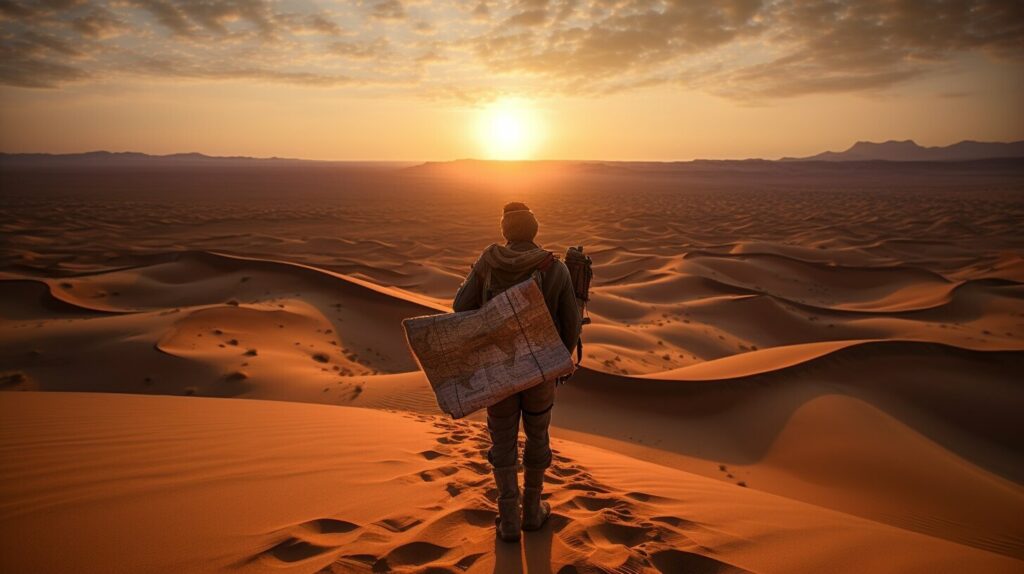
Acquiring these essential desert survival skills can mean the difference between life and death in the harsh desert environment. With practice and preparation, you can increase your chances of survival and stay safe in any situation.
Navigation Techniques in the Desert
Once you have a basic understanding of the desert environment and have acquired some essential survival skills, it’s important to focus on navigation techniques to ensure you can find your way and reach safety.
One of the most important things to remember when navigating in the desert is to always be aware of your surroundings. Look out for recognizable landmarks such as rock formations, cacti, and trees. Keep a mental note of these landmarks as you travel, and use them to guide you back to your starting location or to your destination.
Another useful technique is to learn how to read the sun and stars. The sun will always rise in the east and set in the west, so use this to your advantage to determine direction. At night, the North Star can be used as a point of reference to determine direction. If you have a compass or GPS device, use them in combination with these natural navigation techniques to ensure accuracy.
Using Landmarks
Identifying landmarks can be a lifesaver in the desert. Keep an eye out for anything unusual or unique, such as a large boulder or distinctive tree. Use these landmarks to plot your course, and make a mental note of them so you can find your way back to your starting point.
If you’re traveling with others, try to pick out landmarks that are easily recognizable to everyone in the group. This can help prevent getting separated and lost.
Using a Compass or GPS Device
A compass or GPS device can provide invaluable assistance when navigating in the desert. Invest in a high-quality compass and take the time to learn how to use it properly. When using a GPS device, make sure to bring extra batteries and carry a map in case the device fails.
It’s important to remember that navigation techniques can only take you so far – always be prepared with enough food and water to sustain you in case you get lost or turned around. By utilizing these techniques and being prepared, you’ll be better equipped to handle any navigation challenges in the desert.
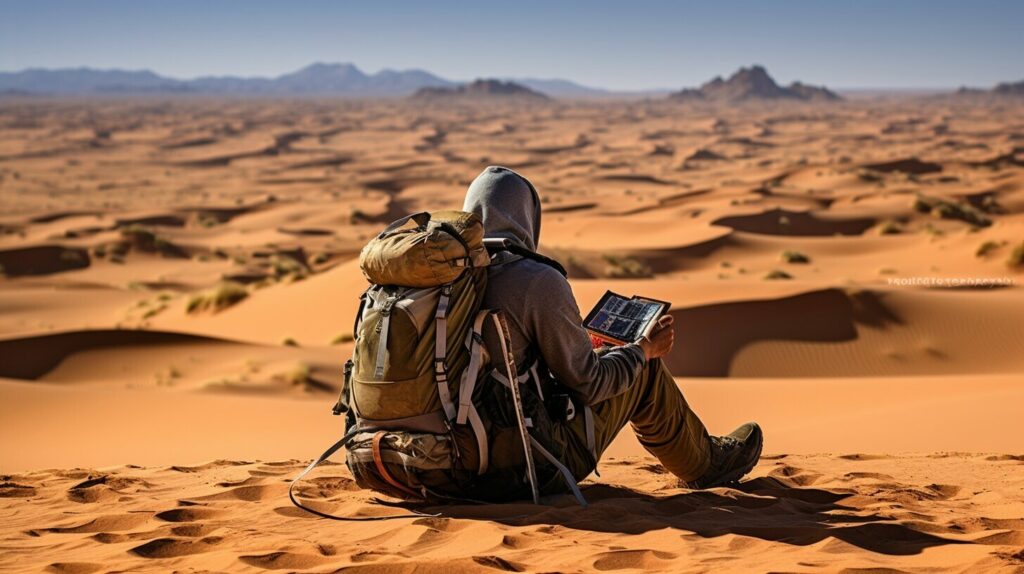
Acquiring Food in the Desert
When it comes to surviving in the desert, finding food can be a major challenge. However, with the right knowledge and techniques, you can increase your chances of finding edible sources of sustenance.
Before setting out on your desert journey, it’s important to research the area you’ll be exploring to determine which plants and animals are native to the region. Some plants and animals may be poisonous or dangerous to consume, so it’s crucial that you know what to look for.
One method of acquiring food in the desert is through foraging for edible plants. Look for plants with recognizable features, such as prickly pear cacti or agave plants with their distinctive fleshy leaves. You can also try digging for roots, tubers, or bulbs.
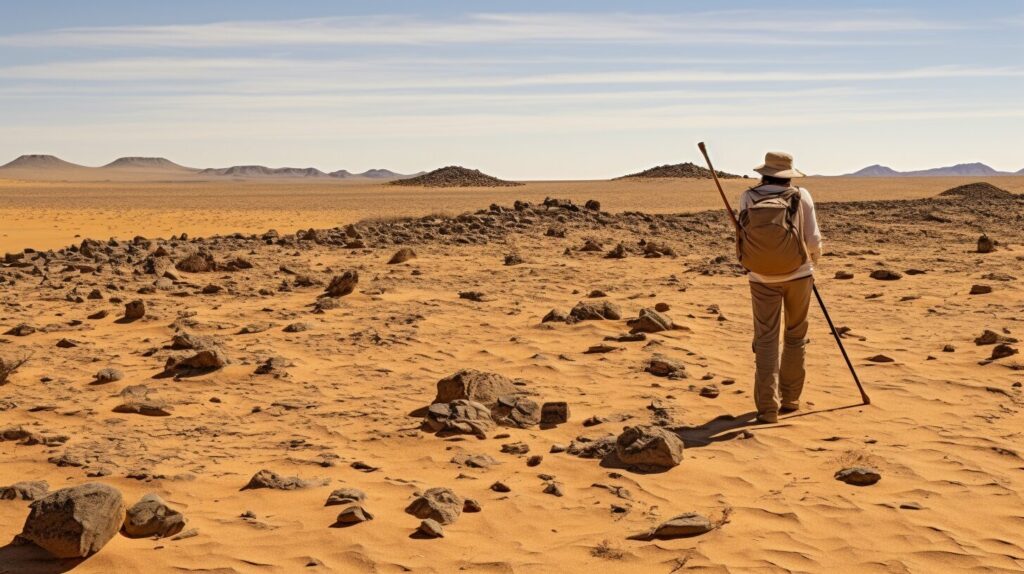
If you’re comfortable with hunting, small game such as rabbits, squirrels, and birds can also be caught and cooked. Consider setting traps or snares in strategic locations, such as near a water source or along game trails.
However, hunting larger game such as deer or coyotes can be dangerous and is not recommended unless you have experience and proper equipment.
Remember, it’s important to conserve your energy when searching for food in the desert. Take frequent breaks and don’t overexert yourself. Make sure to also properly sanitize any food sources before consuming them.
Dealing with Extreme Temperatures
Surviving in the desert requires knowledge of how to deal with extreme temperatures. During the day, temperatures can exceed 100 degrees Fahrenheit, while at night, they can drop below freezing. This section will provide techniques and tips for staying cool during the day and warm during the night.
Staying Cool During the Day
To avoid overheating during the day, it’s important to stay hydrated and to avoid excessive physical activity. Wear lightweight, light-colored clothing that covers your skin to protect it from the sun’s harmful rays. Use a wet bandana or hat to keep your head cool. Seek shade whenever possible, and if there’s no shade available, create your own using a tarp or other materials.
If you start to feel overheated, move to a shaded area, remove any excess clothing, and sip water or sports drinks. Avoid drinking alcohol or caffeine, as they can dehydrate you.
Staying Warm During the Night
To stay warm during the night, dress in layers and sleep in a well-insulated shelter, such as a tent or sleeping bag. Use a sleeping pad to insulate your body from the ground, which can be colder than the air.
Before bedtime, warm up with a hot drink and some light exercise. This will help increase your body temperature and keep you warm throughout the night.
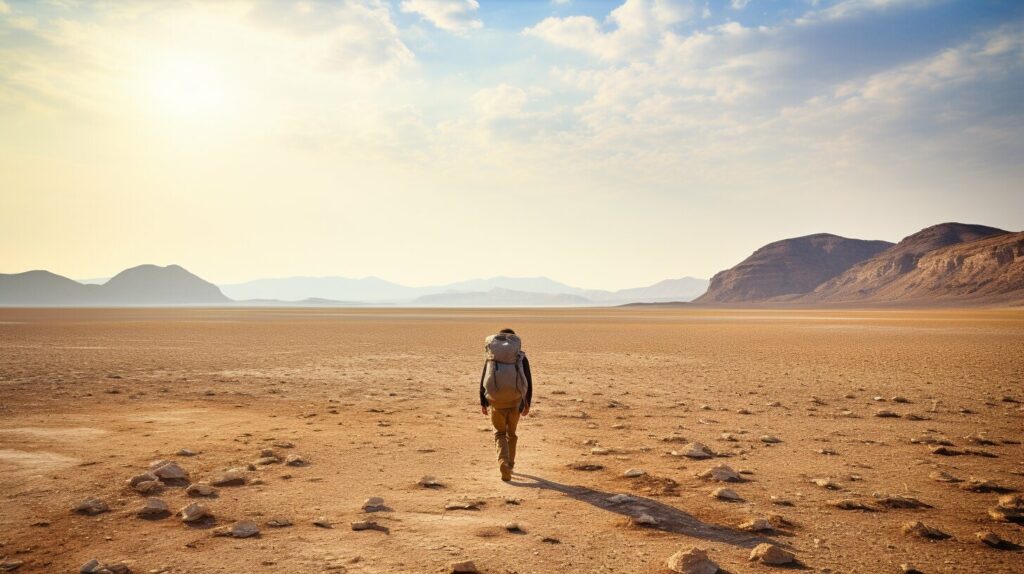
Remember, extreme temperatures can lead to heat stroke, hypothermia, and other life-threatening conditions. Be prepared by packing appropriate clothing and gear, and always be aware of your body’s temperature and your surroundings.
First Aid and Medical Considerations
When it comes to surviving in the desert, knowledge of first aid and medical considerations is essential. Even with the best preparation and precautions, accidents can still happen. Understanding how to treat common injuries and illnesses can mean the difference between life and death.
Dehydration is one of the most common medical issues that can occur in the desert. It is essential to drink plenty of water to stay hydrated and recognize the signs of dehydration, such as feeling dizzy or lightheaded, having a dry mouth or throat, and feeling very thirsty. If you suspect dehydration, take a break and rest in the shade while sipping water. In severe cases, it is crucial to seek medical attention immediately.
Heat exhaustion is another common condition in the desert caused by prolonged exposure to high temperatures. Symptoms include excessive sweating, fatigue, weakness, headaches, and nausea. To avoid heat exhaustion, always wear light-colored and loose-fitting clothing, take frequent breaks in the shade, and drink plenty of fluids.
Snake bites are a potential danger in the desert, and it is essential to know how to treat them. Keep a snakebite kit on hand and seek immediate medical attention if bitten. Avoid using suction devices or tourniquets, which can worsen the situation.
Other common injuries in the desert include cuts and scrapes, blisters, and insect bites. Always carry a well-stocked first aid kit and be prepared to administer basic first aid. Additionally, it is critical to know the location of the nearest emergency medical services and have a plan for getting there quickly in case of an emergency.
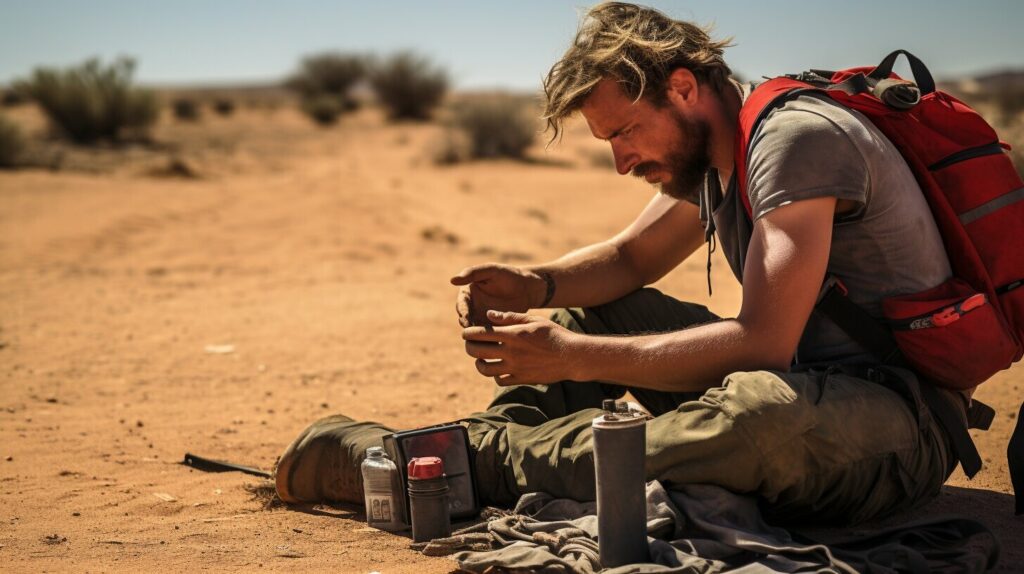
Remember that prevention is always the best medicine. Take the proper precautions and make sure you have the necessary knowledge and equipment before embarking on a desert adventure.
Gear and Equipment for Desert Survival
To survive in the desert, having the right gear and equipment is crucial. You need to prepare for extreme temperatures, lack of water, and potentially dangerous wildlife encounters. Here’s a list of essential gear and equipment you’ll need to pack before embarking on your desert adventure:
| Item | Description |
|---|---|
| Clothing | Pack lightweight and breathable clothing that covers your skin, including long-sleeved shirts and pants to protect against the sun and prevent insect bites. |
| Footwear | Choose sturdy, comfortable boots with ankle support to protect against rocky terrain and snakes. |
| Backpack | Pack a durable backpack to carry your gear and water. |
| Water Containers | Carry at least one gallon of water per person per day, in lightweight, durable containers. |
| Emergency Supplies | Pack a first aid kit, emergency shelter, signaling devices (such as a whistle or mirror), and a multi-tool knife. |
| Sun Protection | Bring sunscreen, sunglasses, and a hat to protect against the sun’s harmful rays. |
| Navigation Tools | Carry a compass, map, and GPS device to help you navigate your way through the desert. |
Remember to pack light and only bring what you need. The weight of your gear will add up quickly, and carrying too much can slow you down and increase your risk of exhaustion or dehydration.
Additionally, make sure to test your gear and equipment before your trip and replace any worn or damaged items. Proper preparation can mean the difference between life and death in the desert.
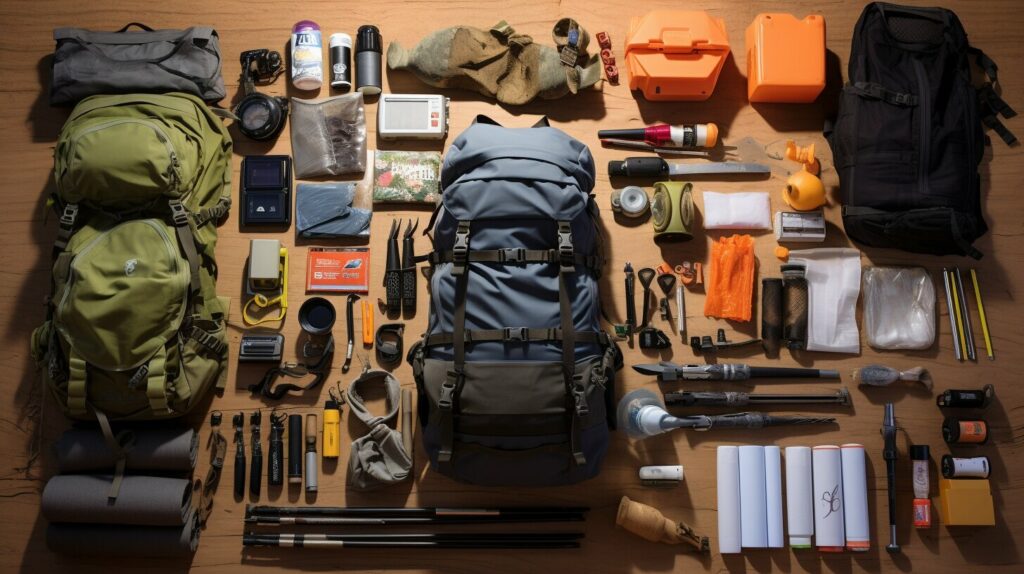
Mental Preparedness and Psychological Challenges
Surviving in the desert requires more than just physical skills and knowledge. It also demands mental preparedness and the ability to overcome psychological challenges.
Isolation can quickly become overwhelming and lead to feelings of loneliness and despair. You may also experience boredom, as the desert environment can appear monotonous and unchanging. To combat these challenges, it’s important to maintain a positive attitude and stay mentally engaged.
One technique to stay positive is to focus on small goals and achievements. Instead of thinking about the long road ahead, break your journey into manageable segments and celebrate each milestone. You can also keep your mind active by practicing meditation or mindfulness exercises.
Fear is another common psychological challenge in the desert, particularly at night. It’s important to remember that fears are often irrational and to focus on the present moment. Try to stay calm and avoid making decisions based on panic.
Finally, it’s essential to have a support system in place. Whether it’s a friend, family member, or fellow survivalist, having someone to talk to can help you through tough times.
Remember, mental preparedness is just as important as physical survival skills. By staying positive, engaged, and connected, you’ll be better equipped to handle the challenges of survival in the desert.

Surviving Desert Emergencies
Despite your best efforts, emergencies can still happen in the desert. It’s important to be prepared for any situation that may arise, and knowing what to do in an emergency can mean the difference between life and death.
One of the most important things you can do in an emergency is to stay calm and focused. This can be difficult when you’re faced with a life-threatening situation, but panicking will only make things worse. Take a few deep breaths and assess the situation.
If you’re lost or stranded, the first thing you should do is try to signal for help. Using a bright colored cloth or mirror to reflect the sunlight and create a signal for rescue planes or helicopters. Additionally, try shouting or using a whistle to alert any nearby hikers or search and rescue teams.
Another common emergency in the desert is a vehicle breakdown. Always be sure to bring a spare tire, a jack and other tools with you in case of unexpected breakdowns. If you find yourself stranded in the middle of the desert, stay with your vehicle for shade and protection from heat and wind.
Another important emergency situation to prepare for is a sandstorm or flash flood. If you see a sandstorm coming, seek shelter immediately. If you’re in a vehicle, turn off the engine and roll up the windows. In the event of a flash flood, move to higher ground immediately and avoid low-lying areas.
Remember, the key to surviving desert emergencies is to stay calm, think clearly, and be prepared for anything. By following the survival techniques outlined in this article and staying alert to potential dangers, you can ensure your safety and the safety of those around you.
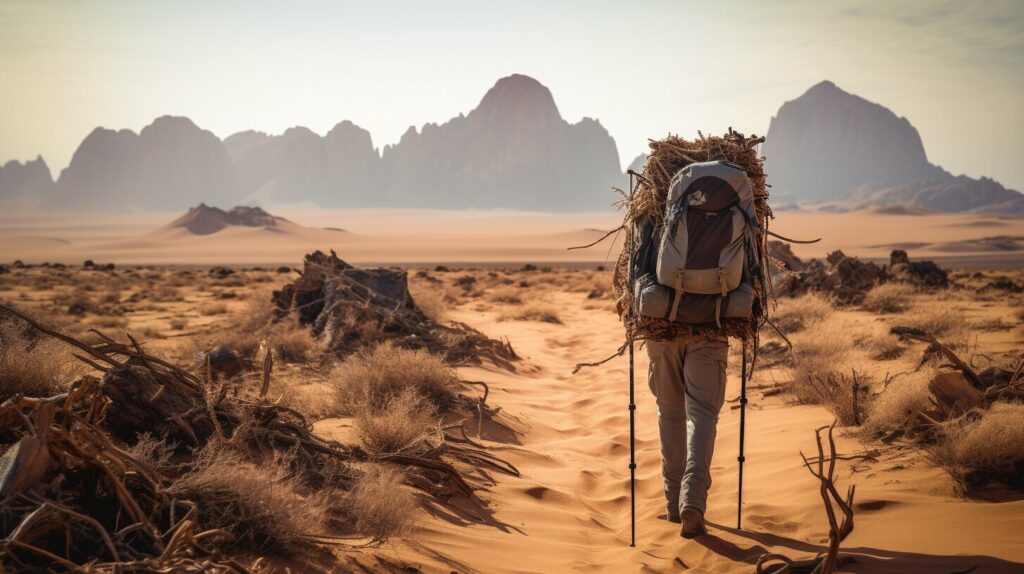
Conclusion
You now have a solid understanding of the importance of desert survival skills and knowledge. By learning about the unique challenges of the desert environment and acquiring essential skills such as finding and purifying water, building shelter, and navigation techniques, you can prepare yourself for any challenge that may come your way.
Remember, surviving in the desert requires mental preparedness as well as physical skills. Maintaining a positive mindset and being aware of psychological challenges such as isolation and fear can greatly enhance your chances of survival.
We hope this article has encouraged you to continue learning and practicing these important survival skills. Whether it’s for a camping trip or a potential emergency, being prepared with the necessary gear and knowledge can make all the difference in ensuring your safety and well-being in the desert.
FAQ
Q: What are desert survival skills and knowledge?
A: Desert survival skills and knowledge refer to the abilities and information necessary to survive in a desert environment. This includes understanding the challenges of extreme temperatures, lack of water, and potential wildlife encounters, as well as knowing how to find and purify water, build shelter, start a fire, navigate, acquire food, deal with extreme temperatures, provide first aid, use appropriate gear and equipment, maintain mental preparedness, and survive emergencies.
Q: Why is it important to learn desert survival skills?
A: Learning desert survival skills is crucial because it equips individuals with the know-how to handle the unique challenges of the desert environment. By acquiring these skills, one can significantly increase their chances of survival if they find themselves in a desert situation. It empowers people to stay safe, find water and food sources, navigate, and handle emergencies effectively.
Q: Can anyone learn desert survival skills?
A: Yes, anyone can learn desert survival skills. While it may seem intimidating at first, with proper training, practice, and guidance, individuals of all backgrounds and abilities can develop the necessary skills and knowledge to survive in the desert. It is important to approach learning with an open mind, seek professional instruction, and gradually build upon acquired skills.
Q: Where can I learn desert survival skills?
A: There are various resources available for individuals interested in learning desert survival skills. These include attending survival schools or workshops specifically focused on desert survival, enrolling in outdoor and wilderness training programs, reading books by experts in the field, watching instructional videos, and joining online survival communities. It is recommended to seek reputable sources and instructors with experience in desert survival.
Q: How long does it take to learn desert survival skills?
A: The time required to learn desert survival skills can vary depending on the individual’s commitment level, prior knowledge, and the depth of skills desired. Acquiring a basic understanding of essential skills can be achieved within a few days or weeks of dedicated learning. However, mastery of more advanced skills may take months or even years of practice and experience in real-life scenarios. Continuous learning and practice are essential to maintain and refine desert survival skills.
Q: Are there any age restrictions for learning desert survival skills?
A: While there may not be specific age restrictions, it is important to consider the physical and mental capabilities of individuals when learning desert survival skills. Some skills may require a certain level of strength, endurance, and maturity to be safely performed. Parents or guardians should always supervise and guide young learners, ensuring they are exposed to age-appropriate content and activities. It is recommended to consult with professionals or instructors to determine suitable learning opportunities for different age groups.

